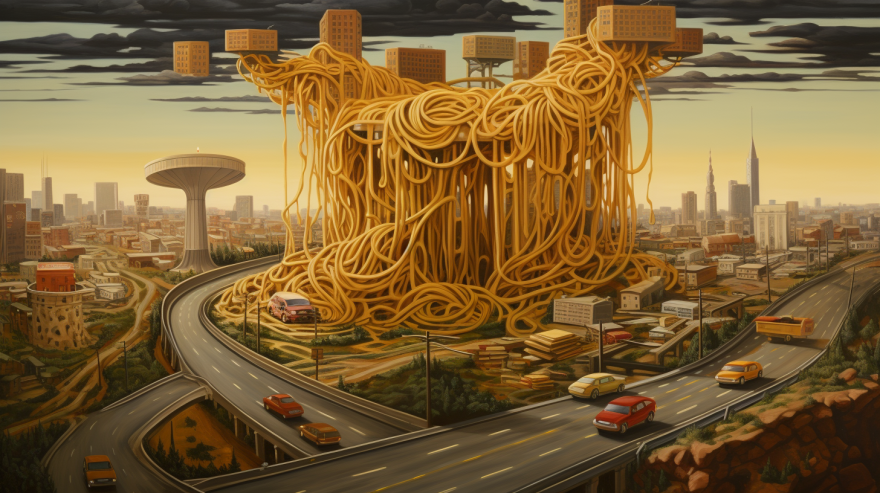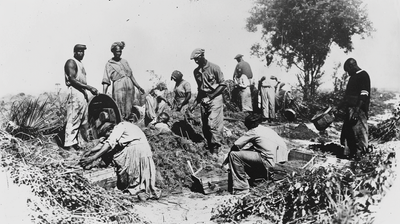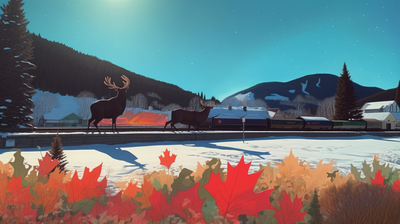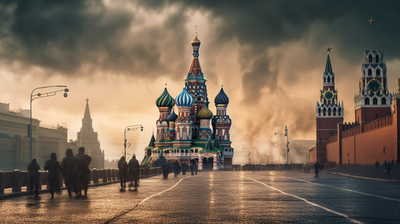The Interstate
Introduction
No infrastructure has affected Americans' everyday life than the Interstate. The Dwight D. Eisenhower National System of Interstate and Defense Highways was created in 1956 by the Federal Highway and Defense Act. Since then, 45,000 miles of interstate highway have been built, crisscrossing the United States and creating little loops in Alaska, Hawaii, and Puerto Rico.
Most importantly, cars can travel in one direction, separated from the opposing direction with a median or guard rail, and at relatively high speed. Interstates have a certain magic about them. They have a culture, and they define driving in this country. They are the envy of the world. They have enabled our modern economy to travel faster over this immense continent.
Although associated with the 60s and 70s, much of the interstate system was still being completed as late as 1992. It was once said that America was great because of the Interstate. However, the history of this unique system of highways is complicated. Much of how interstates crossed America and sliced her cities is now being discussed as the aging system must be replaced. The needs and fastest of the public have changed. Advocates for high-speed rail and mass transportation are agitating to divert dollars away from highways and into mass transit. As it turns out, this discussion has been going on since the system was first conceived.
1919 trip from west to east
A myth is often told that the interstate system was inspired by a terrible 90-day trip taken by a young officer named Dwight D. Eisenhower. Frustrated with the trip's slow progress, he envisioned a new way to get from coast to coast. The answer arrived when he saw the German autobahns during his invasion of Europe in WWII. When he became president, he wanted to bring these new roads to America, and, as the story goes, the interstate system was born. The truth is a bit more complex, but this is the original interstate myth. It's incredible how a network of roads can have myths about them. We humans always need a story for something.
The trip was one of the truths in that story. Eisenhower did make that trip. However, the Germans weren't the first to have multi-lane roads that travelled in one direction. Those already existed. The innovation was on ramps and exit ramps without interruption of cross traffic. The Germans did add the standardization of shoulders and lanes so that no matter where you went, the road would look the same, and drivers knew how to navigate them. However, the interstate system was hardly Eisenhower's idea. And we'll get back to that in a moment. Before discussing the interstate system, we must consider what preceded them and why they were necessary.
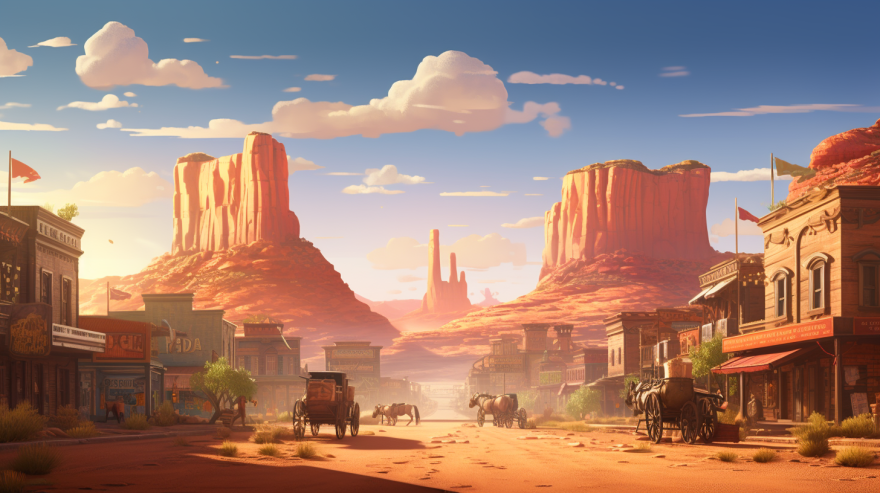
First came the railroads
In the middle of the Civil War, Abraham Lincoln made two crucial decisions that would change the look of America forever. Construction began on the familiar dome of the U.S. Capitol. It would be completed in 1866. However, Lincoln and others in Congress wanted to join the country from East to West, not just North to South. The early plans for a transcontinental railroad began. Lincoln would not live to see the completion of the dome or the railroad. In 1869, The first transcontinental railroad across the United States linking San Francisco to New York via rail would be completed. The final spike of the railroad was driven into the rail tie in Ogden, Utah, on May 10.
Americans had been moving west since the mid-1840s. America had slowly grown out west since the Louisiana Purchase in 1804. Wagon trains began crossing the vast expanse of the American West. By the 1830s, people were filling into what we now call the Midwest, but the Manifest Destiny of Western Expansion could not be stopped, and immigrants in their wagons kept coming. Although the Oregon Trail is the most famous of these wagon trails. Crude dirt trails were dotted with settlements and towns across the American West. The Santa Fe trail snaked south as the Oregon Trail snaked north to the Pacific Northwest. These trails transported people, the mail, and stagecoaches. But the reality is that travelling this way was dirty, long, slow, and unreliable. One could travel to the West Coast via ship, but the Panama Canal wouldn't be built for another 80 years. Vessels were obliged to travel around Cape Horn off the tip of South America and then up the coast, past Mexico and back to the United States. Travelling by ship was only marginally faster than travelling over land, but others had their dangers. Many ships would be lost in the fierce storms around Cape Horn. Travellers over land faced starvation, thirst from a lack of water, and frequent attacks by Native American tribes defending themselves against Westward expansion, as had their eastern cousins 200 years before. The problem was wagons were too slow and ships too dangerous. However, the steam engine had begun the railroads, and they were faster over land, relatively safer, and more reliable than pack animals.
Congress acquired the land necessary and let the railroad companies bicker over how to build the railroad. They started from each side of the county with much fanfare and slowly began building the railroad. Maps of most of the country were crude at best, so surveyors, on sight, would decide the path of the rails. They cut hills, built bridges, and advanced the rails. New towns popped up along the new railroad. Cheyenne, Laramie, and several cities in Nebraska owe their existence to the railroad.
Rails, that is, mass transportation, was the original transcontinental transportation system. However, railroads have their own issues. It still took almost a week to travel from the East Coast by rail. It was 18 hours by express train from Chicago to New York, much less farther west. Trains had to stop at stations. People also have to switch to local trains to go to specific destinations. Railroads didn't go quite everywhere. Once off the rails, people still had to use ground transportation. At first, this would have been horses and wagons, but then Henry Ford created the first cheap automobile that anyone could buy using the assembly line. This innovation would be the first nail in the coffin of passenger rail and much of America's mass transit infrastructure. The car would revolutionize transportation and change how the country was built in the 20th century.

The automobile
The need for a highway system was evident with the rising popularity of the automobile and seemingly choked streets that shared space with people, the occasionally buggy people. The first plans for a highway system beyond the ribbons of 2 lane roads that snaked across the landscape were planned as early as 1939 but were interrupted by World War II. Despite that, the plan was revived in 1944 and wound through Congress until 1956. The original Interstate took 20 years to build, and its success across the country was primarily due to funding. The federal government, often at the behest of car companies like GM, Ford, and Chrysler and other industry groups like the American Road Builders Association or ARBA, encouraged the federal government to promote the use of cars with new highways. Even tire companies got in on the action. Old U.S. highways were being used beyond capacity.
Congress approved the Federal Highway and Defense Act in 1956. After that, construction was quickly begun.
From Interesting Engineering, here's the general course of construction of the interstate system. These are central milestones as the system was completed.
Missouri was the first state off the block when, on August 13, 1956, work began in St. Charles County on US-40, now named I-70. On September 26, 1956, Kansas kicked off its portion of I-70. Additional milestones include:
- October 17, 1974 - Nebraska becomes the first state to complete all its Interstate Highways when the final piece of I-80 is dedicated
- October 12, 1979 - I-5 is dedicated near Stockton, California, linking Canada to Mexico and making it the first contiguous freeway connecting the North American countries
- August 22, 1986 - The last section of I-80 is completed in Salt Lake City, Utah, making it the first coast-to-coast highway, going from San Francisco, California, to Teaneck, New Jersey; it is the world's first contiguous freeway to span the Atlantic and Pacific Oceans
- August 10, 1990 - The final section of the southerly, coast-to-coast I-10 is completed in Phoenix, Arizona, linking Santa Monica, California, to Jacksonville, Florida
- September 12, 1991 - The final section of the northerly, coast-to-coast I-90 is completed near Wallace, Idaho, linking Seattle, Washington to Boston, Massachusetts
- October 14, 1992 - The Interstate Highway System is finished with the completion of I-70 through Glenwood Canyon in Colorado; it is considered an engineering marvel with a 12-mile (19 km) span containing 40 bridges and numerous tunnels.
Costs
It is no secret that the Interstate System is relatively expensive. There were funding issues with the gas tax, which was raised in 1961. The Federal Highway fund has been underfunded for years. Both states and the Federal government put money into fund maintenance and expansion projects.
The cost of the Interstate is not limited to just its construction. It's the cost everyone who owns a car bears to have them. The gasoline tax goes into the highway trust fund, but there's also the cost of owning a car. There is maintenance, insurance, and gas to consider. There's also the land needed to park all the vehicles and the cost to keep them. The interstate enabled automobile culture in a way that probably wouldn't have happened if interstates hadn't been built or certainly not in cities. And stick a pin in that because it will be important later.
A quick side note: Unlike the railroad or the wagon train, construction was taken up locally, so there are no excellent shows about people moving from coast to coast to build this infrastructure. The Federal government let the states do the lion's share of the work.

Charles Kuralt and the Dark Side of the Interstate
You can drive across America and see absolutely nothing.
— Charles Kuralt
Charles Kuralt, an iconic CBS broadcaster, in the late 1960s and early 1970s, as the interstate system was nearing completion, took several televised road trips across the country. If you want to watch some clips, they are on YouTube. Charles Kuralt was not a fan of the Interstate. The Interstate system bypassed most small towns, unlike the national highways. Much like being ignored by the railroad, the Interstate killed many small towns. This has reached popular culture, including the children's movie franchise Cars. Radiator Springs was thriving until I-40 came, and everyone who used to shop and stay there drove on without stopping.
Kuralt tried to show all the things that were being left behind and start a conversation about the Interstate system, why we needed it, and if it was a positive force for the country. He visited small amusement parks, roadside diners, and other places that had been built around the national highways in the 1920s and 1930s and that were being squeezed out by the new Interstates. The Interstate is built for fast travel with as few interruptions as possible. Kuralt invited us to slow down and enjoy the interruptions offered by a unique American folksiness that has long since disappeared from the landscape.
Highway Beautification
Lady Bird Johnson helped pioneer the highway beautification movement. Early on, one of the biggest problems with the new highways was their appearance. It was dismal at best. Beautification included landscaping, getting rid of junkyards, and controlling the number of billboards along America's roads. Because the Highways were often built away from small towns (but straight through significant cities), they bypassed all sorts of derelict locations and land uses. Cleaning up the highways gave them a better and more neat appearance. That did not solve all the issues with the Interstate, though.
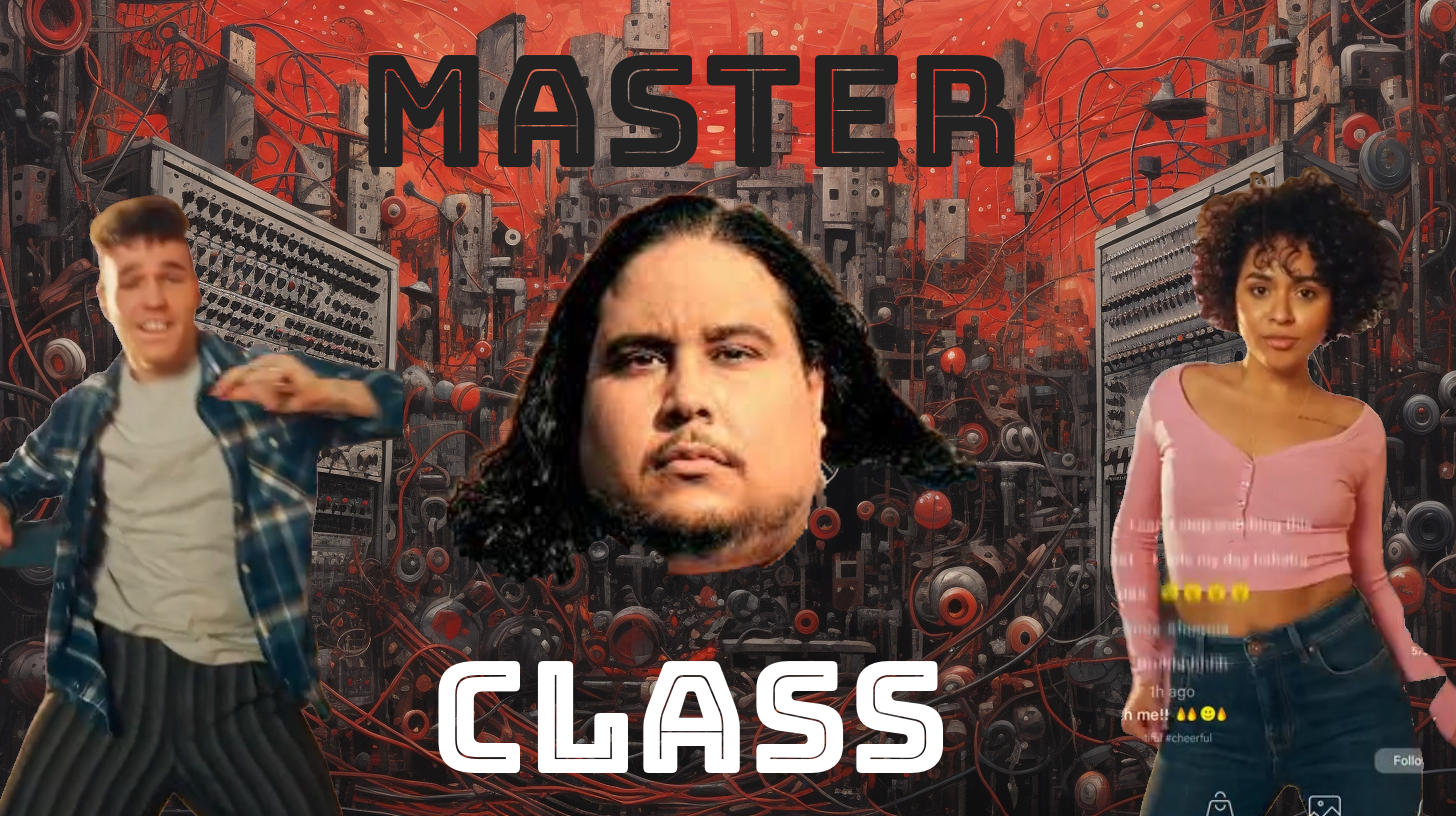
Noise!
Interstates are not quiet. I live about 100 yards from part of I-5 as it travels through Seattle, and although I can't hear anything in my apartment, the moment you step outside, you can listen to the cars, trucks, and buses passing by.
Even as it was being built, expressways were controversial. In her 1970 book, Superhighway Superhoax, Helen Leavitt took the Interstate to task for its costs, the space it took up, the way it plowed through American city centers, caused traffic (rather than easing it), caused pollution, and took money away from better and more effective public transit options. By the numbers, her math makes sense. While the highway can only carry 5,000 people per hour, a double-track train line, which takes up much less space and is less noisy, can move 50,000.
She also points out that it works the least when the system is needed to work the best. Everyone has been in traffic jams, especially at rush hour. In bigger cities, rush hour can start as early as 3 p.m. and last until 7 p.m. That's 4 hours of clogged roads, slow-moving cars, extra pollution, and frustration on the part of drivers. She cites a premium bus service project in Peoria that picked up and dropped off people from their front doors and delivered them to work. It was popular, and riders reported feeling happier. While the bus service already ran routes in these areas, the convenience of the premium bus service gained the bus service triple the customers. Fast forward to today, and most major cities have a public transit system, including buses and trains.
America is still woefully behind other developed nations regarding mass transit. Helen Leavitt also talked about how, in the original 1944 plan, interstates weren't going to enter cities; they were going to around them and leave city centers intact. However, by the time 1956 rolled around and the law was set to be passed, the federal government allowed interstates to be built in urban and rural centers.
America would be dense if it weren't for the Interstate. The contributions to suburban sprawl can not be understated. Interstates were explicitly designed to help get people in and out of cities, anticipating that people would work, shop, and be entertained in cities but often would not live there.
Mass transit options were often eliminated. Interstates didn't destroy mass transit as such. Most mass transit was still privately owned. Bus companies got out of the gas tax to pay the interstates. However, the Interstate helped boost private car ownership, which would do more to destroy mass transit in this country than any other single factor. Let's face it: Who wants to sit on a bus or a train when they can go door to door on their own time, at their own pace, and in private comfort?
The interstate and urban renewal
Many city leaders saw the flush budgets for the interstate system as a way to renew their communities.
Around this time, many cities were trying to prop up downtowns. People had fled to the suburbs, and even by the late 50s, urban blight was a problem. City leaders were determined to modernize cities. Tacky facades are applied to historic buildings. Metal or plastic panels were standard. The old, pre-war look was getting covered over with the materials of the future.
City leaders used the Interstate to get rid of blight. Unfortunately, that usually came at the expense of communities of colour. Any poor community was ripe for destruction as local leaders picked the route the new highways would take across their cities.
Neighborhoods torn apart
One of the biggest problems with the Interstate, or as I call it, the dark side of the Interstate, is its effect on urban neighbourhoods, particularly in communities of colour. The highways were frequently built in poor areas as a way to get rid of "slums." Roads were also often used as part of disastrous urban renewal projects. Sadly, city planners, awash with Federal cash, used the new highway system to displace communities of colour and impoverished areas. Cities would never be the same. Some people describe the transit of Interstates as a scar. There is a rumour that it wasn't until they were building I-95 through Washington D.C. that Eisenhower realized that the roads were being constructed through cities. Not around them, but that rumour has never been substantiated.
The future of the Interstate
The Interstate system has reached the end of its design life. It was made to last around 50 years. We have gotten our use out of the system, so it is time to rethink how we fund the system, where it goes, how it's used, and how we might use it in the future. This report has interesting ideas:

Most of the focus today is on the downsides of the Interstate. The fact that urban highways tore neighbourhoods apart and made quick work of minority neighbourhoods has become the dominant narrative about the Interstate. Solutions range from burying urban streets to eliminating them and letting the interstates end as they approach cities and begin as the city gives way to rural areas.
The future of transportation has much less to do with driving cars than in the past. This year, the Biden administration, in its infrastructure proposal, allocates significant funding for new, dedicated passenger rail lines that would begin a high-speed rail network. The environmental impacts of car transportation are now well understood, and the trend toward using cars less and transportation options that can move more people for less fuel input cost. High-speed rail trains would likely use electricity, which could be made with green technology. The age of the car-centered plan is over.
Slate reported that to stop subsidizing car travel, the interstate system should involve more taxes, more tolls, and more expenses to reduce driving and encourage other types of transportation. However, that could lead to more air travel without a proper rail system. And we'll get into that rail travel later.
Will Ten Big Ideasrban highways be eliminated?
What will the future of the Interstate be? I don't think the Interstate is going anywhere any time soon. Still, it will look very different than in the past, and how it is used is indeed beginning to change as America leaves the car behind for other transportation options. I don't think urban highways are going anywhere fast, same with cars, but the pressure will be in to move away from this expensive system and toward a system that prioritizes people over cars.

